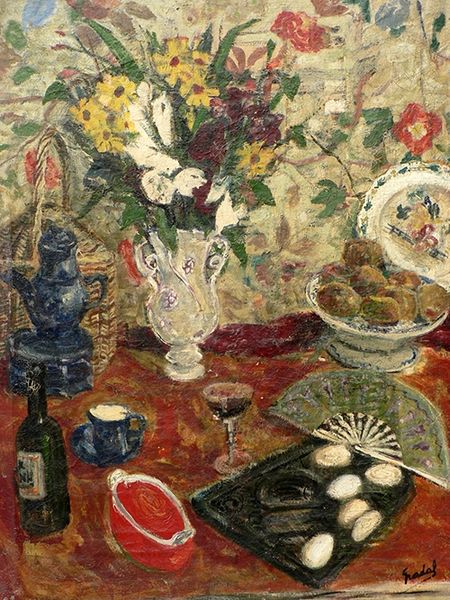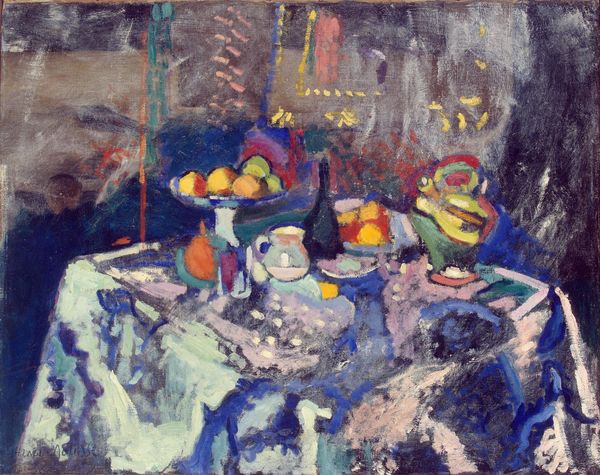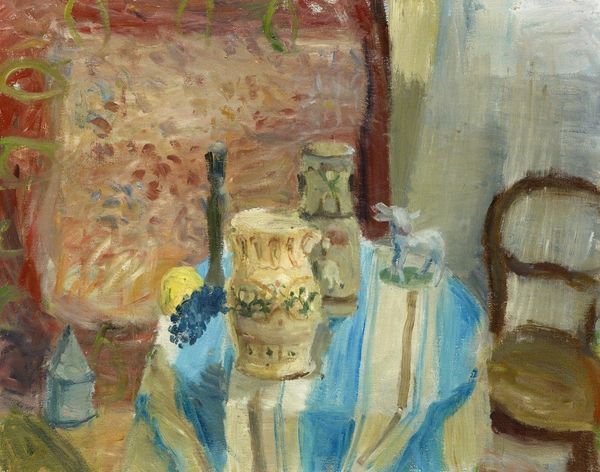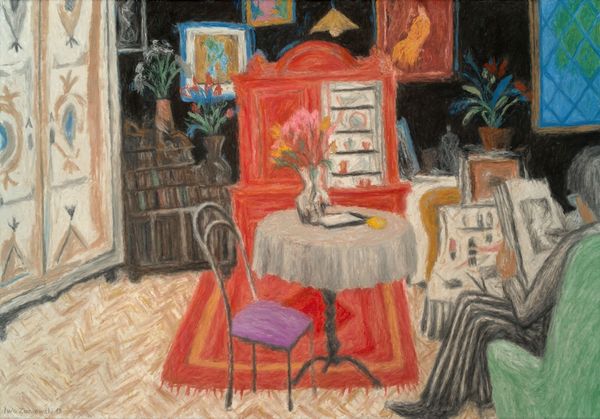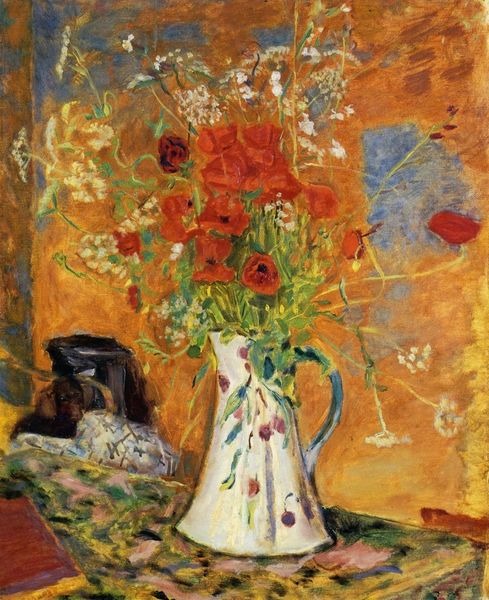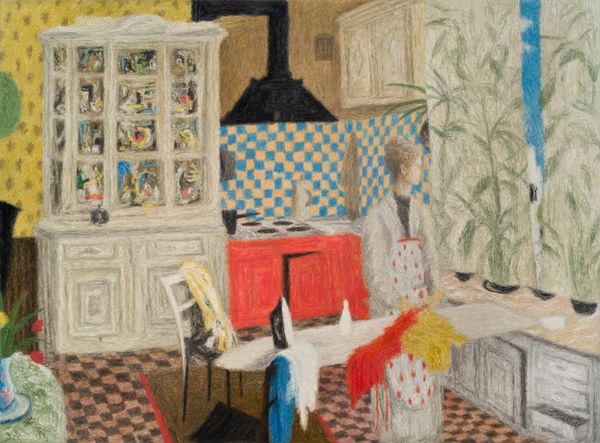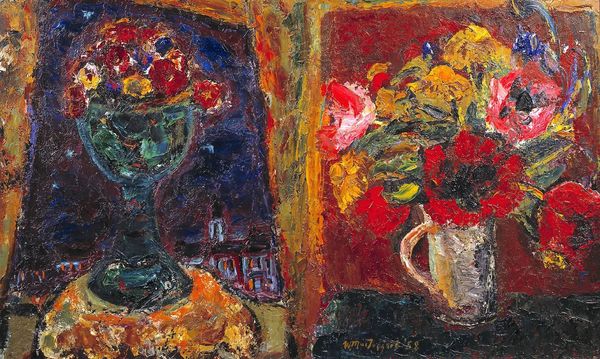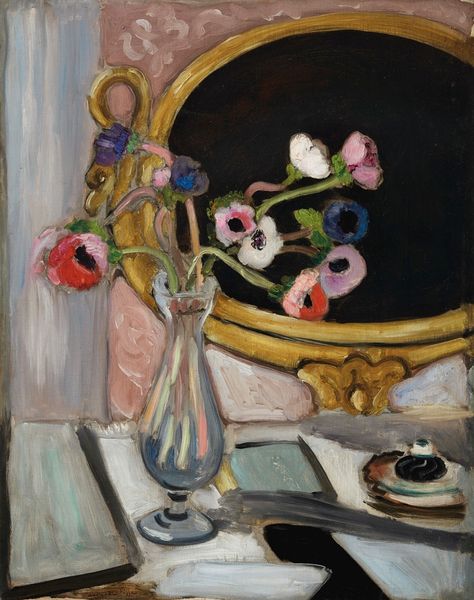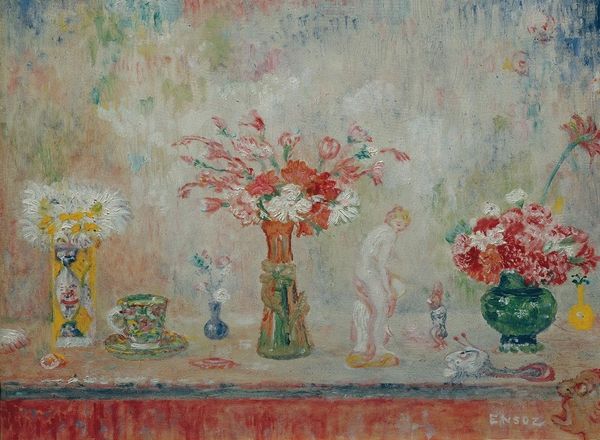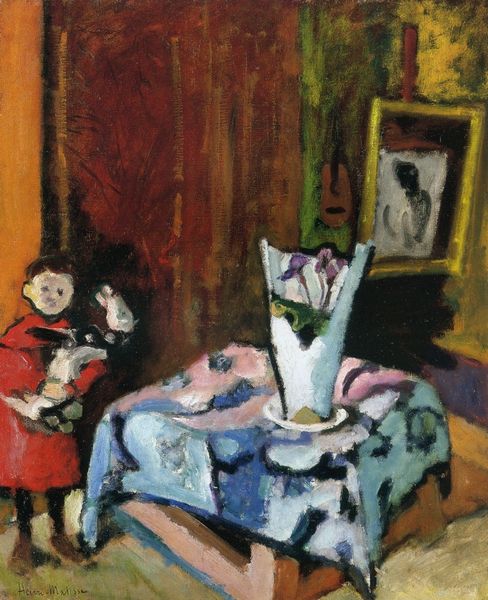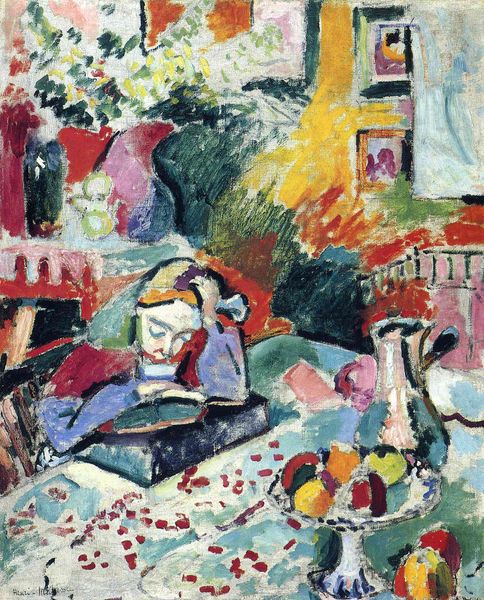
Copyright: Emilio Grau Sala,Fair Use
Editor: This is "Under the Lamp" by Emilio Grau Sala, painted in 1960. It appears to be oil on canvas. The thickly applied paint gives it a wonderful texture. It feels like a very domestic, intimate scene. What do you see in this piece, especially from a material perspective? Curator: I see an emphasis on the materiality of paint itself. Grau Sala’s impasto technique isn’t just descriptive; it’s actively constructing the scene. Notice how the heavy application transforms everyday objects – a lamp, a vase, the figures – into textured surfaces. The subject becomes almost secondary to the physical properties of the oil paint itself. Editor: So, the brushstrokes aren’t just representing light and shadow, but almost becoming light and shadow themselves through their texture? Curator: Precisely. And consider the social context. Grau Sala, working in the mid-20th century, engages with the evolving role of painting after photography. Painting shifts from representation toward exploring its unique material qualities. It becomes about what paint *can* do that other media cannot. He challenges the traditional hierarchy that often valued smooth, illusionistic surfaces. This elevates the labor, the physical act of painting, and acknowledges the value and impact of the handmade object in the face of mass production. Do you see evidence of that labour? Editor: Yes, definitely. It’s impossible to ignore the physical process when you’re confronted with this much texture and visible brushwork. It’s not trying to hide the work involved, but showing it off. The textures suggest, like the clothing that somebody would wear in a domestic setting, that is made by hand rather than produced through factories. Curator: That is an excellent insight! I wonder if Grau Sala aims to portray these qualities in the domestic labor shown. Editor: This changes how I view the relationship between the artist, his materials, and subject. The painting isn't just depicting a scene, it’s highlighting the value of manual skill in an increasingly industrialized world. Curator: Agreed, the work really shows the interplay between process, materiality and meaning in a new light.
Comments
No comments
Be the first to comment and join the conversation on the ultimate creative platform.
